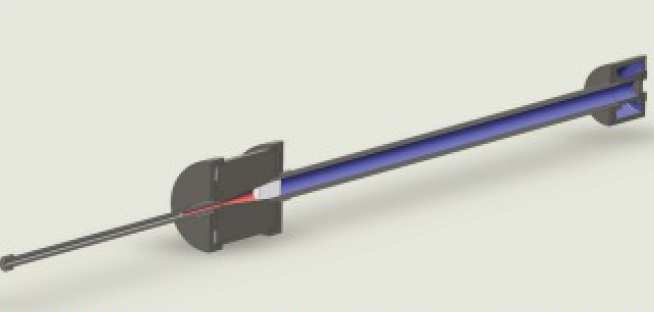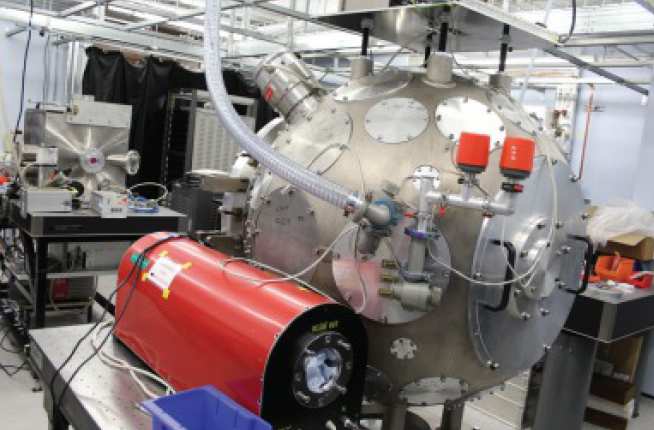High rate loading

A number of small-scale impact launchers have been developed and are in regular use at the ISP, ranging in bore, from 13 mm–30 mm, and performance, from a few 10’s ms-1 to <900 ms-1. These facilities designed with flexibility and portability in mind are suitable for small-scale ballistics studies, materials characterisation such as Taylor impact tests or even plate-impact studies, can be used for diagnostic development, and are also readily accessible training tools for undergraduate and postgraduate students. Additionally, these meso scale facilities bridge the spatial, temporal, and pressure scales between the main experimental platforms of the laser-shock driver, MACH and the large bore gas launcher.
In 2014 the design development and commissioning of a compact two-stage light-gas gun extending the range of experimental loading platforms available to the ISP began, with operation due to start in the second quarter of 2015. Interior ballistics simulations based in a gasdynamic model of the gun indicate velocities as high as 4 km/s can be reached using a design that combines compactness (full length under 4 m long) with a bore size and payload weight (10 mm diameter, 1 g projectiles) suitable for plate impact studies. Pressure and temperature conditions are also predicted to allow a cost-effective lifetime of critical components. Key design concepts further included an impressive turn-around time allowing up to three shots per day, inert gas based operation (with compressed Helium) for both first and second stages and, most of all, portability features which allow exploiting high brilliance beams at large-scale facilities for X-Ray and spectroscopic studies under dynamical loading conditions.

A long pulsed laser shock facility has been completed and is being commissioned in experiments.The former CLF TA-East chamber has been fitted with new electrics and vacuum installations, including a multi-axis target alignment system. Measurements of beam stability and pointing are in progress and beam energies ~10J have been achieved, with future upgrades planned; this will gradually be increased to a 50 Joule, 1.4 ns long-pulse focused to a uniform 1 mm2 area, with future upgrades expected to achieve 500 J in a 4 ns shaped pulse. The system is being designed to rapidly compress very thin targets, on the order of tens of micrometres in thickness, at strain rates between 108-1010 s-1, with routine diagnosis of shocked state using line VISAR.
In addition to the main drive, part of the Cerberus laser, built in collaboration with the Plasma and Quantum Optics Laser Science research groups within Imperial, a macro-pulse laser 3-15 J with a pulse shaping capability has been installed within the laboratory. This offers greater flexibility in terms of pump probe capability, and provides an alternative drive for low pressure experiments.
Further Information
Lead Academic: Dr Daniel Eakins (email)
Additional Sponsorship: Royal Society